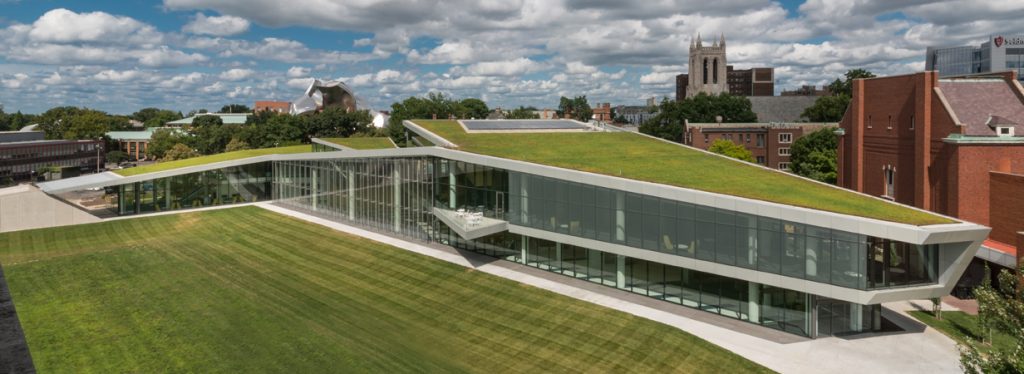 The U.S. Green Building Council (USGBC) has designated Case Western Reserve University’s Tinkham Veale University Center with a LEED Gold certification, an endorsement of the building’s energy and environmentally sensitive design and construction.
The U.S. Green Building Council (USGBC) has designated Case Western Reserve University’s Tinkham Veale University Center with a LEED Gold certification, an endorsement of the building’s energy and environmentally sensitive design and construction.
LEED, or Leadership in Energy & Environmental Design, is a green building certification program that recognizes best-in-class building strategies and practices nationally. LEED-certified buildings save money and resources and have a positive impact on the health of occupants, while promoting renewable, clean energy.
“USGBC’s Gold certification of the ‘Tink’ underscores the university’s continued commitment to sustainable, energy efficient campus facilities,” said Stephen Campbell, vice president of campus planning and facilities management, who oversaw the building’s design and construction.
Chicago-based Perkins & Will was the project architect. Donley’s Inc., based in Cleveland, served as construction manager.
In 2008, Case Western Reserve committed to ensuring that all new construction at least met LEED Silver standards when President Barbara R. Snyder signed the American College & University Presidents Climate Commitment (ACUPCC). This document, which today has nearly 700 signatories, articulates steps institutions will take to achieve climate neutrality.
“This national recognition for the Tinkham Veale University Center illustrates what we can accomplish when we articulate a clear goal early and maintain our commitment to meet it,” President Snyder said. “I commend Steve Campbell, our architects and the construction team, as well as everyone in the campus community who continues to promote sustainability in our university activities.”
The designation marks the second time the university has achieved a gold rating; the first came for House 5 in the Village at 115 project. Opened in 2005, the overall Village project secured a LEED Silver rating. Tomlinson Hall’s renovation also received a LEED Silver designation, while the Wyant Athletic and Wellness Center, which opened in 2014, think[ box ], which will be dedicated Oct. 1, and the new residence hall at 1576 E. 115th St. are each pending Silver certification.
Tinkham Veale University Center, which was officially dedicated last Aug. 24, was named for the late Tinkham Veale II, a 1937 Case Western Reserve graduate who achieved remarkable business success and even greater philanthropic impact.
The $50 million project was 100 percent donor-funded, including Veale’s $20 million commitment to name the center, which was designed to foster interaction and community for Case Western Reserve students, faculty, staff and the larger University Circle audience.
The 89,000-square-foot “green roof” building features an “air curtain,” which captures and releases the sun’s heat before heating the interior space. The internal temperature is managed through radiant-floor heating and cooling as well as chill-beam technology.
The green roof and automated window-shade system also assist in managing the building’s heating and cooling expense. Designed to maximize natural light, the building’s walls are made of glass, giving the facility a glowing effect at night and creating spectacular views of the surrounding area during the day.
The building accommodates student spaces, an amphitheater, department offices, a food court, sit-down restaurant, a large interactive media wall and the 7,300-square-foot Kelvin & Eleanor Smith Ballroom.
Per the requirements of the ACUPCC, Case Western Reserve detailed its particular approach in a 2011 Climate Action Plan. Among its provisions is that the university’s master plan includes consideration of ways to reduce and use space more efficiently—all with a goal of maintaining the existing building square footage, rather than increasing it. The master plan is scheduled to be completed this fall.

